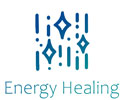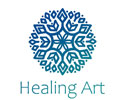Who’s the Healer?
Now that I’ve got the introductory information out of the way, I can finally write about topics that I’ve been itching to share! Today, I’ll get started on Reiki Study Hall, which I hope will be a place where reiki students and anyone interested in energy healing can come together and get a deeper understanding of reiki. First let’s look at who really is the healer during a reiki session and how to do it well.
Am I the Healer?
If you had an attunement with a reiki master, you most likely heard an advice similar to one of the following:
- You are not the healer, reiki is.
- Let go of control and move out of the way of reiki.
- Don’t try to fix the problem. Just let the reiki flow.
For a beginner who is excited about helping others, this might be a difficult concept to grasp. Our desire to improve our own health and the health of our loved ones tend to outrun our self control. But why is it so important to remove ourselves from the equation?
Yoko Tsuji of Japan Reiki Association has an analogy that makes a lot of sense to me. (She mentions it often in her videos, one of which is here.) She says that we all give off our own energy that has a flavor of our own, sort of like beverages. Some of us are like coffee, some are more like tea, and others may be soda or juice. If you enjoy coffee, drinking a cup will make you feel good. But if you’re not a fan, you won’t feel great about the experience. Reiki, on the other hand, is like pure mineral water. It’s good for everyone’s body. Our job as a reiki practitioner is to provide this water while preventing our own flavor from seeping in.

So, How Do You Put Yourself Aside?
Understanding why you should hold back your own energy doesn’t necessarily give you the know how. I can’t say that I have a clear answer either because, in all honesty, experience is the best teacher. You can’t really learn it from reading words. But I do have another imagery that may help you get closer to the answer.
I like to picture my arms as the tubes of a dialysis machine. My left hand absorbs the energy of physical and mental pain, and it gets pumped up through the top of my head out into the universe, or the “dialysis machine”. I ask that the pain be transmuted to love. Then I reabsorb this transmuted loving energy, and it flows back down through my right arm. I’m just there to be a path for energy to flow. I’m not even the one who circulates the energy. I trust that the universe knows how much reiki needs to flow and to which part.
Am I Doing It Right?
One of the ways you can know if you’re allowing reiki to take center stage is to see how relaxed you are. If your client falls asleep or you fall asleep during self-healing, that’s a great sign! On the other hand, if your mind can’t stop worrying or if you’re body feel tense, take a deep breath and regroup. No one can do it well 100% of the time. It’s totally OK if this happens.
Another indicator is how tired you feel after the session. If you still feel great or even better than when you started, excellent! If you feel tired, you probably sent some of your own energy into the other person, and that’s why you feel depleted. This actually happens to me more often with family members. Because you love them so much, it’s probably harder to detach yourself from worry and the outcome. Again, don’t be hard on yourself if this happens. You can always try again. Another imagery Yoko likes to use is that you imagine youself being filled up with reiki first, and then you just share whatever flows over.
I hope you found this interesting, and that you gained a new perspective about how to allow reiki to be the healer!


